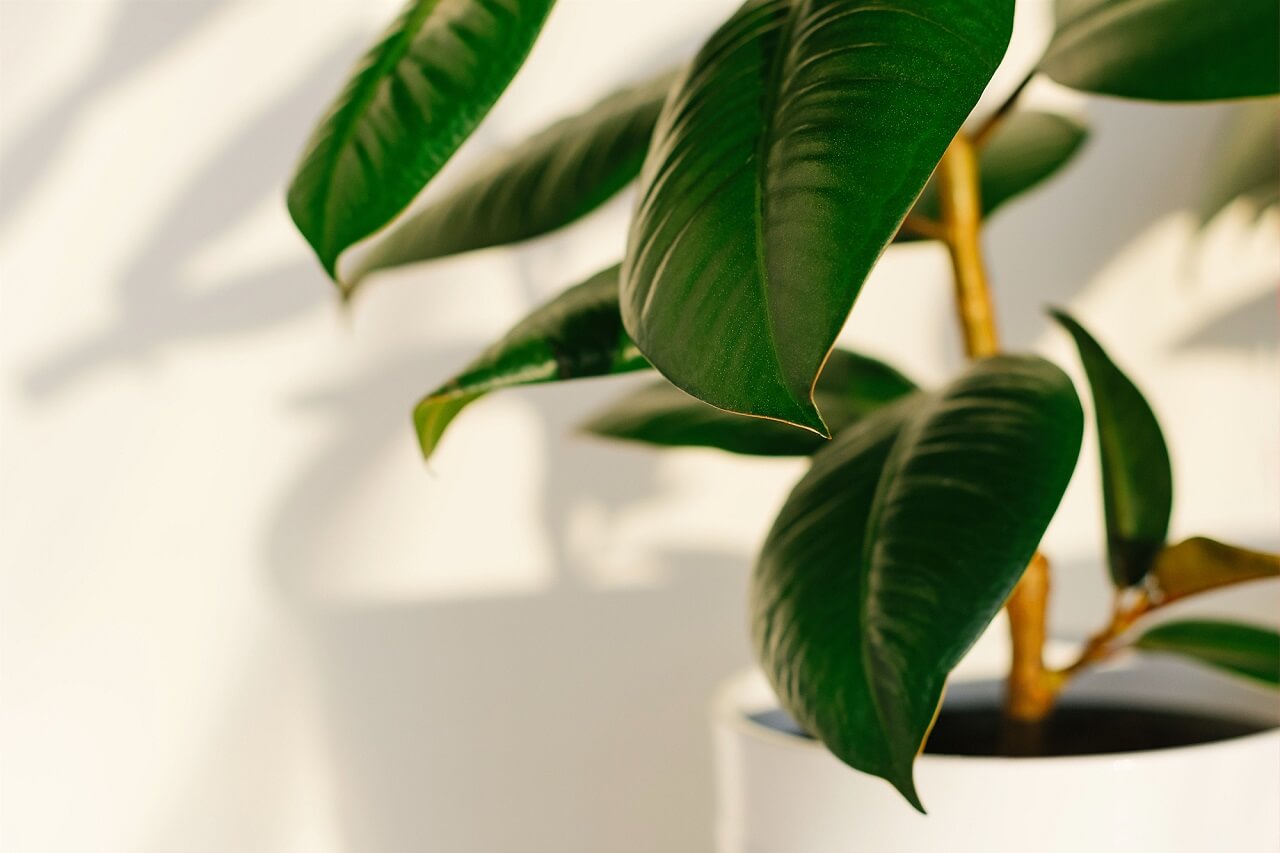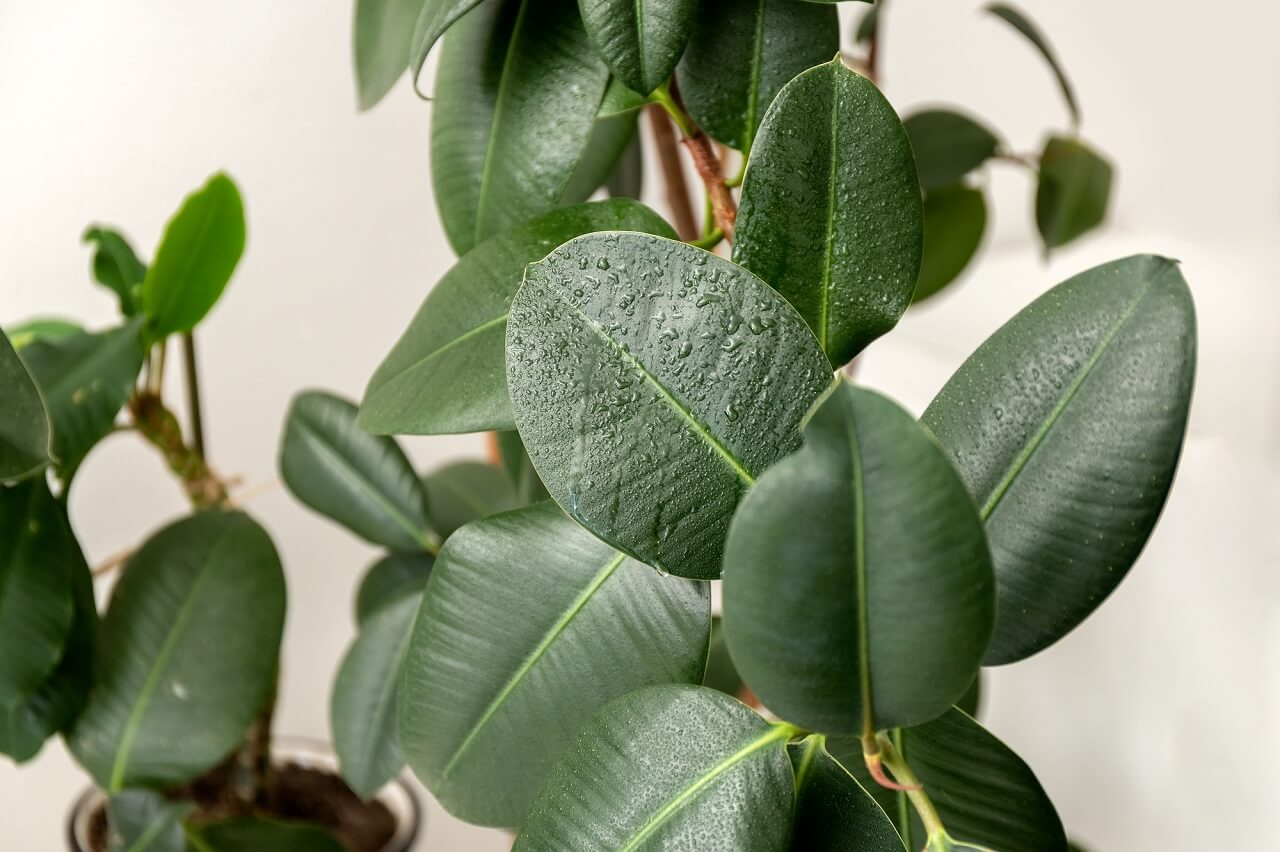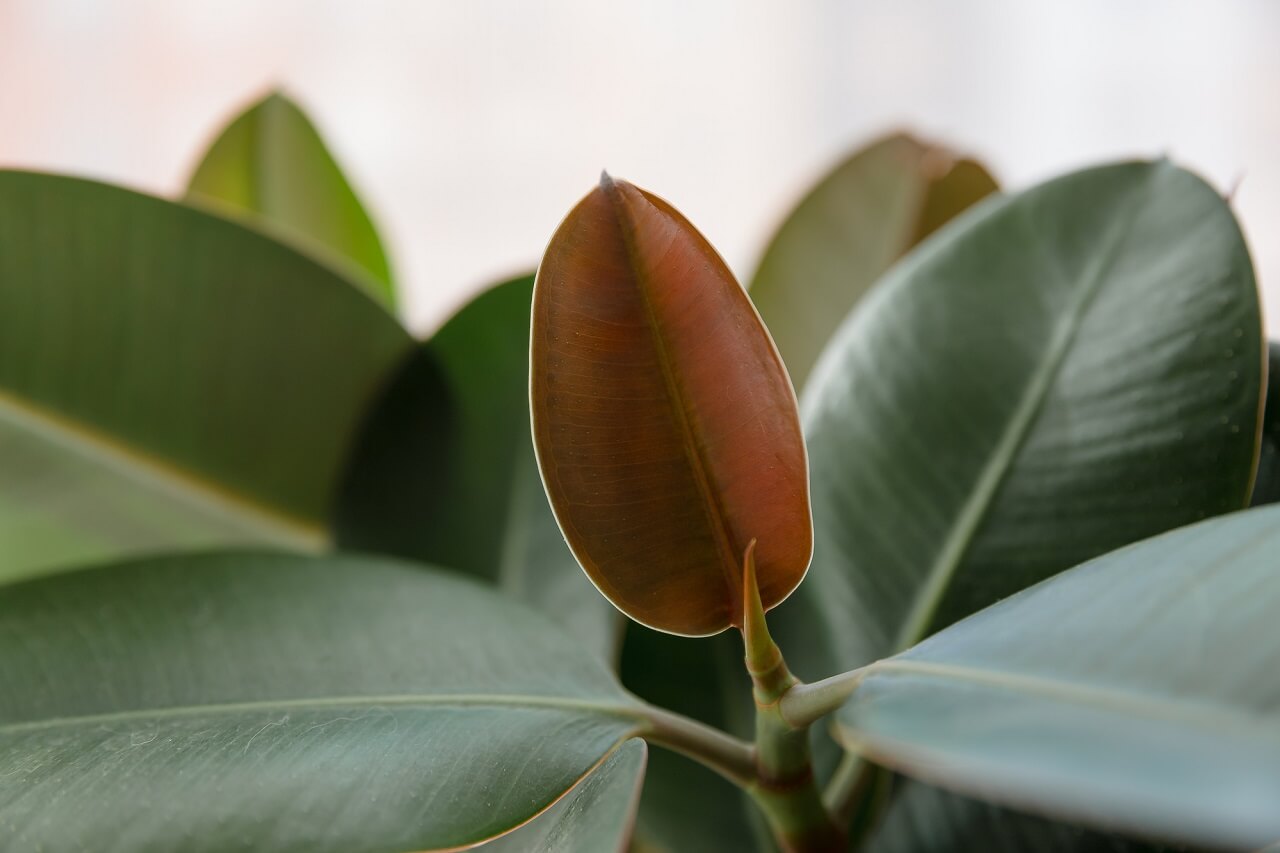Rubber plants, or Ficus elastica, are one of the most popular houseplants to own. Their resilience and ability to adapt to less-than-ideal conditions make them a great choice for beginner and expert gardeners alike. In this article, we’ll talk about how to grow one of these beauties at home, including propagation and growing one from seed.
What You'll Learn Today
How Do You Grow a Rubber Plant Indoors?

Rubber plants are fairly easy to grow indoors. Although they can get over 100 feet tall in their native habitat, they’ll happily maintain a much more manageable height indoors. Indoor rubber plants can grow up to about 10 feet given proper care if you let them.
There are a few different ways to start growing a rubber plant. You can purchase a young plant from a nursery or garden center, propagate from a cutting, or grow one from seed.
How To Propagate Rubber Plant?

One of the best things about rubber plants is how easy they are to propagate. Propagation is the process of creating new plants and can be done in several different ways according to the type of plant.
If you have an existing rubber plant with several stems with leaves on it, you can propagate with a cutting. Keep in mind that cuttings take root more readily when it’s earlier in the growing season (which is from early spring to late summer).
Another thing to note before you begin is that rubber plants excrete white sap (latex used to make rubber) when their stems are cut. The sap is toxic to humans and animals, so it’s a good idea to wear gloves while trimming your plant.
Before you take a cutting, gather your supplies:
- Sharp, clean gardening shears
- Protective gloves
- A small plastic pot
- Well-draining potting mix
- Rooting hormone (optional, but recommended)
- A zip-top plastic bag
Here’s the process:
Step 1: Fill Your Pot
Fill a small plastic pot with any all-purpose, well-draining potting mix. Plastic pots are best for rubber plants because they retain moisture better than other pot types such as terra cotta or clay. They’re also more flexible and less likely to break than ceramic.
It’s helpful to moisten the soil before you put your cutting in.
Step 2: Pick Your Cutting
Good candidates for cuttings are stem sections that are about 6 inches long and have at least two sets of healthy-looking leaves on them. To get more bang for your buck, try to find a couple of unruly stems that are growing out of form. Then you’re pruning and propagating at the same time!
Step 3: Collect the Cutting
Use your garden shears or scissors to make a nice clean cut at a 45-degree angle. Make the cut just above a leaf node, which are the little raised bumps on the stem where leaves grow out of.
Step 4: Remove the Lower Leaves
Take the lowest leaves off of the cutting, since that part of the stem will be buried in the soil.
Step 5: Stick the Cutting in Soil
If you have rooting hormone, dip the bottom of the stem into the solution before you put the cutting in the soil. This helps to ensure the roots will establish themselves easily.
Step 6: Give it Some Humidity
If you haven’t moistened the soil yet, you can do that now. When you’re done, open your plastic zip-top bag and stick it over the pot. This creates a makeshift greenhouse for your plant baby to keep it humid.
How To Grow a Rubber Plant From a Cutting?

Once you have your cutting in its pot, it should go in a warm area that gets plenty of indirect light. Then, care for it the same as you care for the parent plant: keep the soil moist but not soggy, and water when the top of the soil feels dry.
In about a month or so, roots should start to grow. You can check to see if your cutting has rooted by giving it the gentlest of tugs. If you feel some resistance, you officially have a plant!
Once you’re sure it has rooted, you can remove the plastic bag from the plant. You should start to notice new leaves growing in about six months.
How To Plant Rubber Tree Seed?
It is possible to grow rubber tree plants from seed, but only if you’re lucky enough to get your hands on some of its seeds. Ficus plants are pollinated in their native environment by fig wasps, which aren’t typically found outside of their natural environment.
Once a ficus plant flowers, it is pollinated by the wasp and subsequently produces fruit. These fruits produce and then drop fertile seeds on the ground, which may or may not germinate.
It’s rare and challenging to purchase authentic ficus seeds from a reliable source. Furthermore, once you receive them, they may not germinate.
If you do happen to obtain some rubber tree seeds, you can find out which ones are fertile by dropping the seeds into a container of water. The fertile seeds will sink to the bottom, while the sterile seeds float.
You can place the fertile seeds in a small pot filled with potting mix – just place them on the top of the soil and don’t cover them. Water the soil, and then place the pot in full sunlight, which they require to germinate.
Rubber plants can take up to three months to sprout. Once they do, wait until the plant grows two sets of leaves to transplant individual seedlings.
Ficus tree plants can also be propagated via a process called air layering. To see this cool technique explained, watch this YouTube video:
Bear in mind that sometimes cuttings just won’t root, but don’t give up. Once you successfully propagate a plant, you’ll be hooked.
Although you likely won’t be able to use the same methods to propagate all of your houseplants, there are tons of resources online that explain the process for specific plants.
If you’re looking for more information on your rubber plant, check out this guide on what to do to save a dying plant.
Do rubber plants need feeding?
These plants will benefit from a dose of fertilizer now and then during the growing season – around once every 6 weeks is plenty. Go for a fertilizer that has an NPK of 24-8-16, because these plants love a bit of extra Nitrogen.